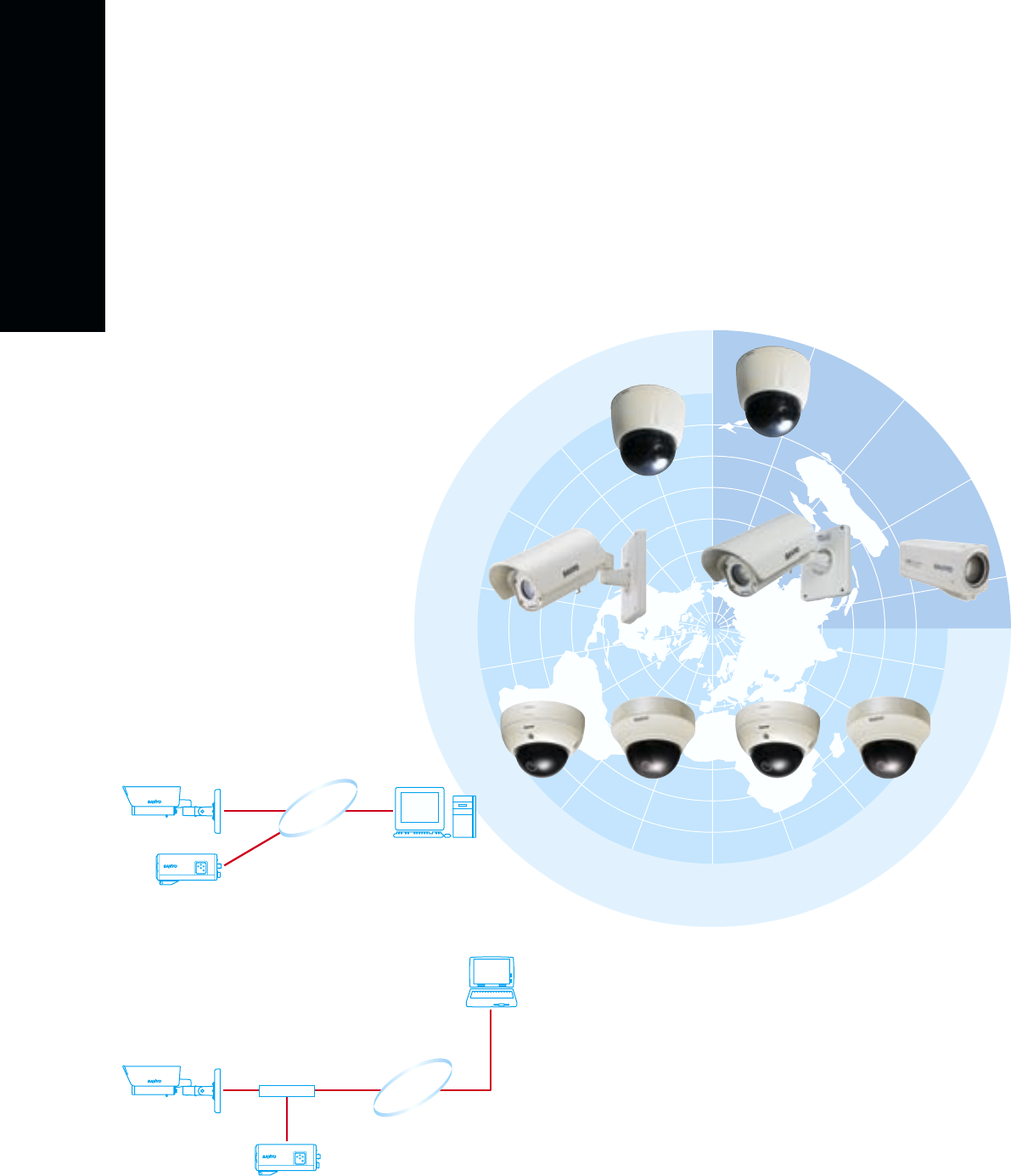
A Full Featured Camera with a Built-in Network Interface
IP Camera Solution
IP Camera Lineup
PoE Supported
Switching Hub
PC
H.264 / JPEG
compatible
JPEG compatible
Use of a PC for Monitoring
By simply using a standard web browser, like Internet
Explorer, on a personal computer, the user has access to
the full color video image from the camera. In addition, a
camera with a zooming function makes it possible to zoom
in to a particular location of concern. The 30x optical zoom
function of the 600 series makes it possible to obtain a
clear picture, even in the zoom-in mode. Recording the
JPEG image on a PC is also possible by the use of VA-
SW3050S (for server) software.
DDNS (Dynamic Domain Name System)
Service compatible
The VCC-ZMN600P and VCC-XZN600P can be accessed
with a fixed host name (e.g. sanyovcczmn600p), which
makes the network easy to remember, always available,
and secure.
Network
Network
VCC-ZMN600P
VCC-9800P series
+ VA-82LAN
VCC-XZ200P
+ VA-20LAN
VDC-DP7584P
+ VA-50LAN
or VA-51LAN
VCC-P7575PA
+ VA-50LAN
or VA-51LAN
VDC-DPN9584P VCC-PN9574P
VCC-9800P series
+ VA-80LAN
VCC-XZN600P
A network camera is a system that allows the user to view the image captured by a
camera on a network-connected PC. The advantage of using this type of camera is its
low cost in system implementation. The camera is suitable for remote surveillance
systems, distribution of live video, and other security systems and supports
JPEG/H.264. Its ability to transmit stable video over a network makes it an ideal
choice for remote surveillance.
Images monitored over a network can be checked using a general-purpose web
browser (Internet Explorer)*
1
or Network Monitoring Software VA-SW3050 series*
2
.
Power-over-Ethernet (PoE)
Both VCC-ZMN600P and VCC-XZN600P support the IEEE
802.3af standard for Power-over-Ethernet (PoE) applications
to allow power to be supplied over LAN cabling. In addition
to making installation easier, this allows camera installation
in places where it would otherwise be difficult to secure a
power source.
E-mail function
A setting for automatic sending of mail (up to 5 addresses
can be set) is provided. By using this setting, an alarm
notification e-mail can be set when an alarm is detected.
Or, e-mails can be sent at regular intervals. In either case,
an image can be attached to the e-mail.
Schedule setting
Timer sending or alarm notification can be performed during
a specified time period. The following 5 functions are
provided: TIMER (SMTP) for timer sending of e-mail, TIMER
(FTP) for timer sending of images via FTP mode, ALARM
(SMTP) for e-mail notification of an alarm, ALARM (FTP) for
sending of alarm images via FTP mode, and REMOTE
ALARM "ACTIVE" for enabling camera alarm output 2 by
remote operation.
Transmission using 2 types of codecs
(H.264 and JPEG) is possible.
For video compression, H.264, optimized for transmission
of moving images over a network with low bit transfer
rates, is used to enable real-time high-image-quality
monitoring, and for still images JPEG is used to offer high-
image-quality in a common image format. Monitoring can
be performed according to the user's application, so that
any important scene is not missed.
*1 ActiveX installation is required. *2 See page at right for details.








